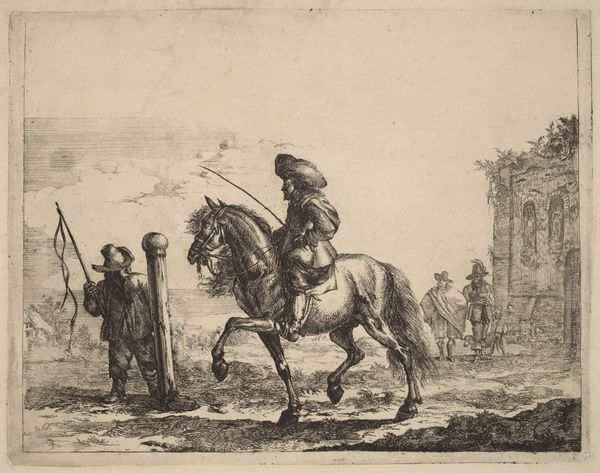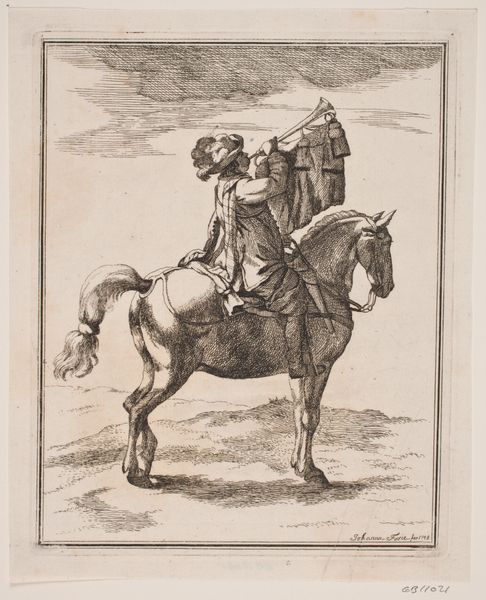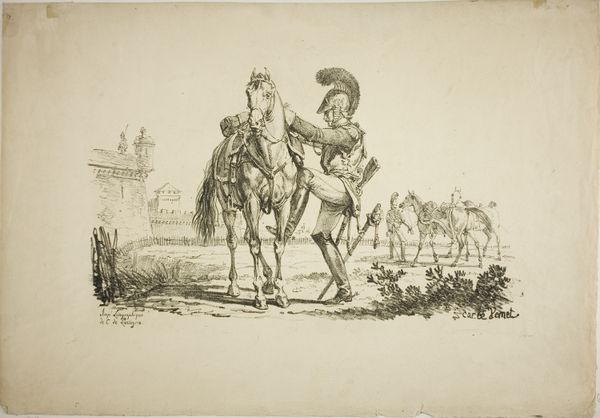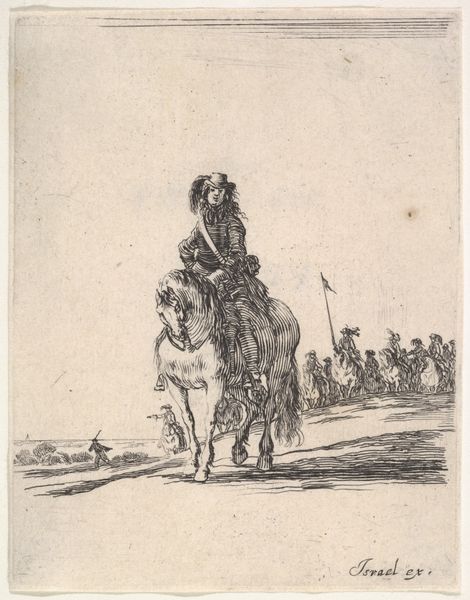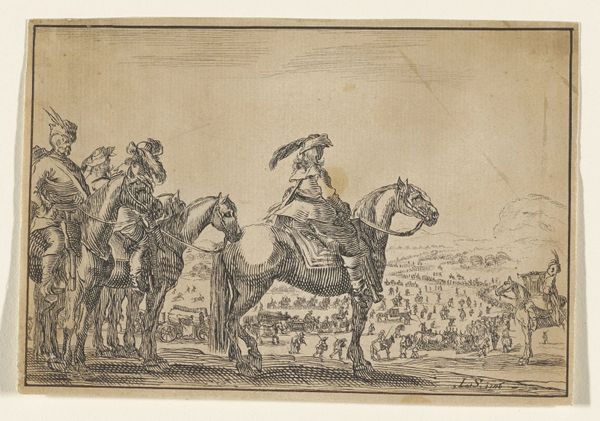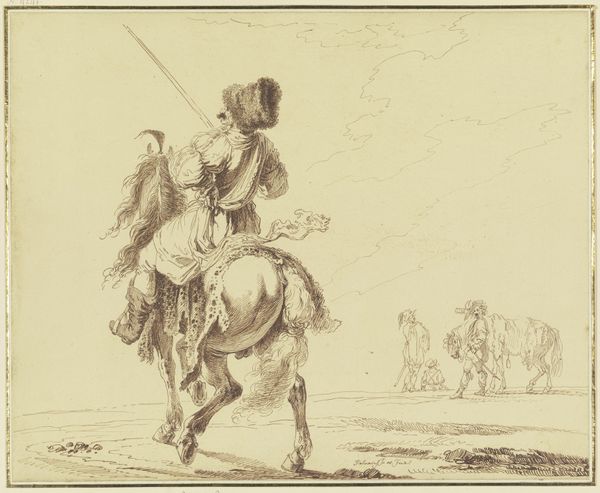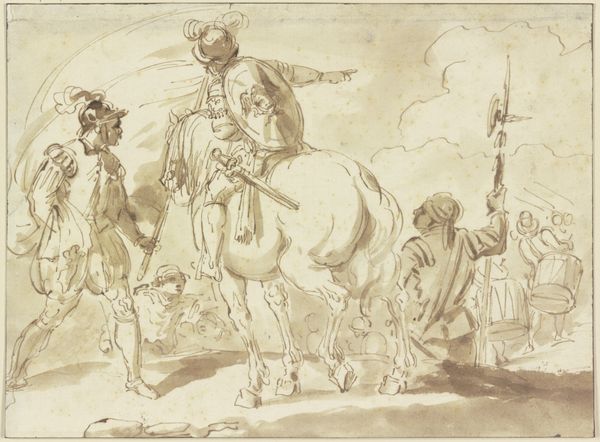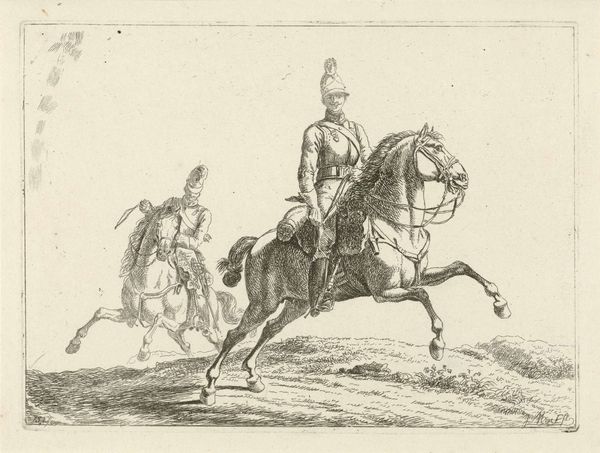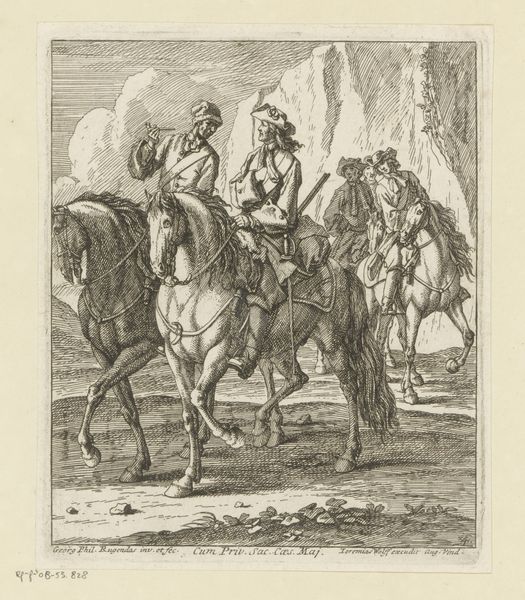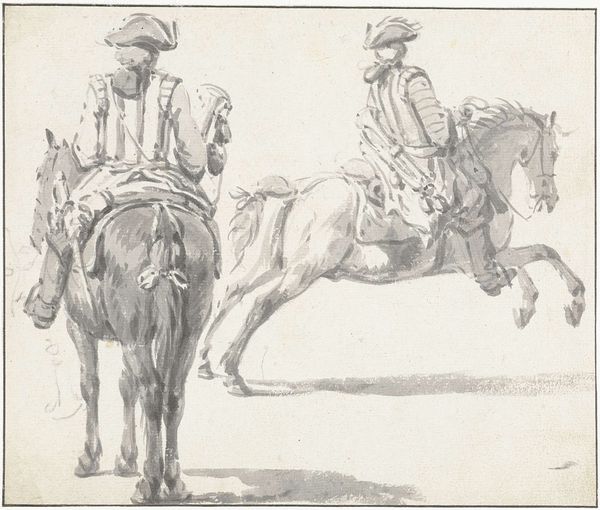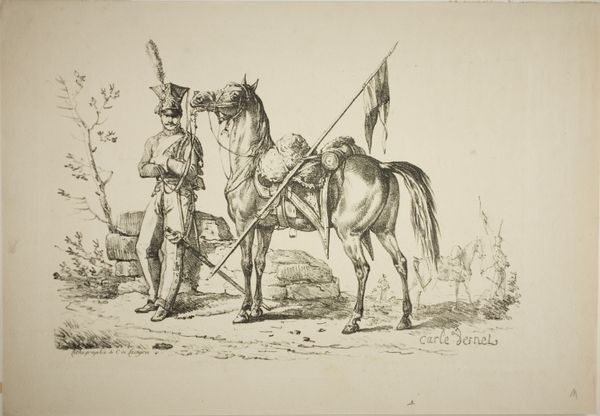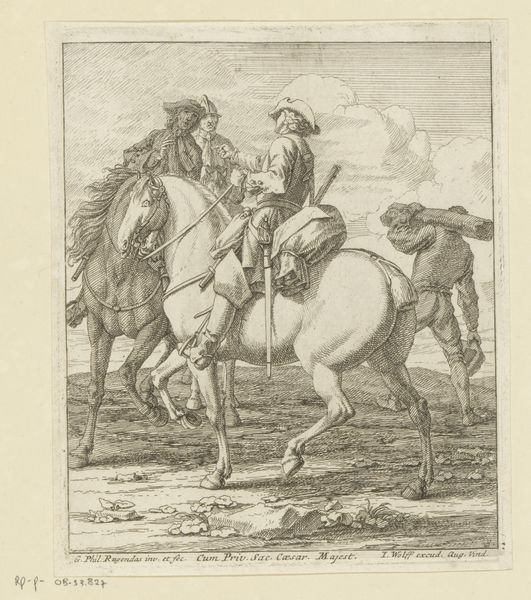
A Mounted Grey Horse Being Schooled in Piaffe 1646 - 1668
0:00
0:00
drawing, print, ink, pencil
#
drawing
#
baroque
# print
#
pencil sketch
#
landscape
#
charcoal drawing
#
figuration
#
ink
#
pencil drawing
#
pencil
#
horse
#
genre-painting
#
realism
Dimensions: Sheet: 5 5/8 × 7 15/16 in. (14.3 × 20.2 cm)
Copyright: Public Domain
Curator: Philips Wouwerman created this drawing, “A Mounted Grey Horse Being Schooled in Piaffe,” sometime between 1646 and 1668. It's currently held at the Metropolitan Museum of Art. The technique is really stunning—it’s rendered in ink, pencil, and wash. Editor: The energy of the horse is what really strikes me. Despite the monochrome palette, you feel its power and tension. The posture of both the rider and the animal are charged, the anticipation is palpable. Curator: Absolutely. And considering Wouwerman’s socio-economic position, his access to the equestrian world and the leisure activities of the wealthy opens a fascinating dialogue. We have to acknowledge his place within systems of privilege that were inherently exclusive and hierarchical. It’s impossible to separate this depiction of equestrian training from its context of class and power. The performative and practiced artifice in which wealth manifests through access and ability. Editor: Yes, precisely. It reminds us that art often serves to reinforce existing power structures, especially regarding patronage and audience, however there is still so much to appreciate technically about his draftsmanship, his portrayal of Dutch Golden Age realism that it makes the image quite interesting, if complex in that relationship between viewer and patronage as the means through which the art even comes to be. Look how he captured the subtle textures of the horse's coat. Wouwerman used fine lines and shading to achieve volume and depth, the piaffe requiring not only technique for the rider, but also the horse to build the core muscle required. There's a kind of beauty there that isn't intrinsically linked to politics, per se, even though its environment enables its execution. Curator: That’s a really valid point and something that is crucial to unpack; we're dealing with a nuanced relationship. How do we appreciate artistic skill and craftsmanship without erasing the fact that these representations are embedded in complex social dynamics and that there are complex histories when concerning equestrian ownership and power. To whom is that access granted and afforded to, historically and in the present? Editor: Precisely, and this drawing becomes a point of entry into examining those power structures and the evolution of these practices—which continue into modern life as luxury displays through both the animal's power and the social rank and role to the privileged equestrian practitioner. It is also interesting to wonder what art pieces might look like should the narratives shift toward a dismantling of power structures concerning gender, wealth and animal use, the questions art must now navigate to forge a path ahead. Curator: I appreciate how our conversation highlights these intertwined dynamics, enriching our understanding of Wouwerman’s drawing beyond the surface level and the means of access, its narrative role beyond even our two voices this moment, creating greater dimension in conversation with all, as an educational conduit.
Comments
No comments
Be the first to comment and join the conversation on the ultimate creative platform.
